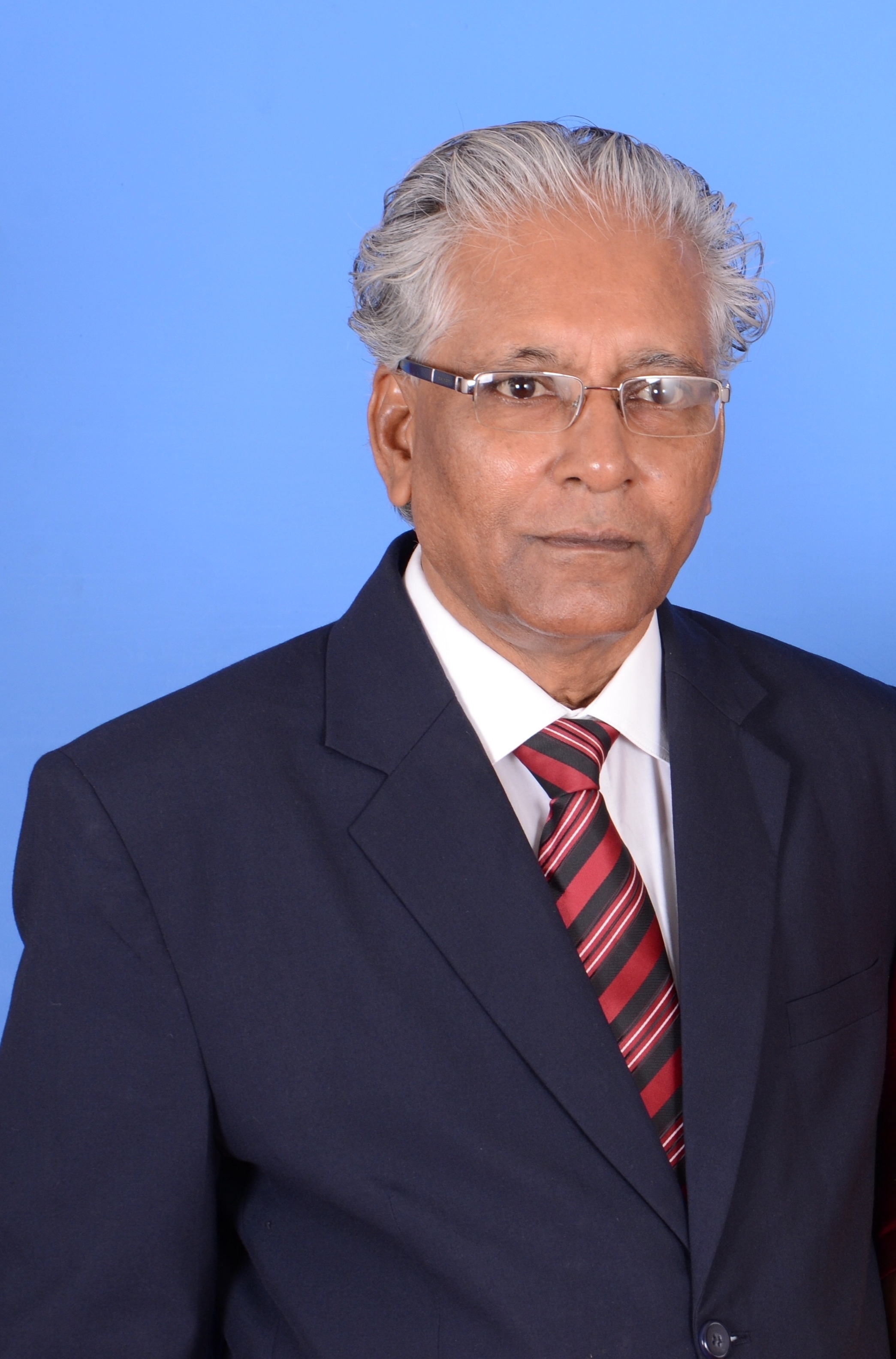Day :
Keynote Forum
Manoj Mukhopadhyay
University of Technology, Papua New Guinea
Keynote: InSAR data detect ground deformation at the Rabaul Volcano, Papua New Guinea – Root Plumbing model for a shallow dyke intrusion
Time : 15:00-15:25

Biography:
Manoj Mukhopadhyay is a Professor of Geophysics at Department of Applied Physics, University of Technology, Lae, Papua New Guinea. He was also a Professor of Geophysics at the Department Geology and Geophysics, King Saud University, Riyadh, Saudi Arabia (2008-2015). He was the Visiting Professor in Kuwait University, Head of the Department Applied Geophysics, Indian School of Mines, Dhanbad, India. His research area includes gravity interpretation, seismotectonics, petrophysics in reservoir studies and volcano-geophysics.
Abstract:
The Rabaul caldera developed in New Britain Island, PNG, is an elliptical volcanic complex of 9´14 km2 within the Bismarck Volcanic Arc. Central part of the Rabaul Volcano field is breached by sea-water, causing inundation between the eruptive centers. The arc is associated with the subduction zone located near a triple junction constituted by the Solomon Sea, south Bismarck and pacific lithospheric plates. The caldera was formed by a series of caldera collapse structures and a group of basalt-andesite volcanic centers that consists of two intra-caldera active eruptive centers, namely, Tavurvur and Vulcan. After a major twin eruption in 1994, Vulcan has ceased activity while Tavurvur has continued intermittent eruptive activity with last major eruption in 2014. Local seismicity is monitored by the Rabaul volcanologic observatory that is operational since 1937. Various studies have constrained point pressure source (Mogi) beneath the caldera. Others have suggested radial dyke intrusions along the caldera wall to explain complex caldera-deformation. The Rabaul seismicity zone defines an elliptical seismic zone oriented NNE/SSW, trending ~5´9 km ellipse extending from near surface to a depth of 4 km. This corresponds to the walls of subsequent caldera collapse, leading to outward-dipping ring-fault structure. This is also corroborated by 3D seismic tomography to indicate low velocity zones in the calderas area which has put more constraints on the possible magma source locations. In addition to conventional geodetic data, Interferometric Synthetic Aperture Radar (InSAR) technology has been used in the present study to detect ground deformation to further constrain possible pressure sources. Using ALOS PALSAR and GPS dataset, we modeled a shallow dyke intrusion at a depth of 1 km to explain localized deformation observed on the NE-edge of the Tavurvur cone and a 4 km deep Mogi source at the center of the caldera just south of Matupit. Finally, the shallow dike intrusion is interpreted to represent the root plumbing system beneath the Rabaul caldera at this specific locality.
Keynote Forum
Milton Obote Kataka
University of Venda, South Africa
Keynote: Application of geophysical techniques in mineral exploration for potential sulphide deposits in Musina area
Time : 16:05-16:30

Biography:
Dr Kataka M O is a Senior Lecturer, Department of Mining and Environmental Geology, University of Venda, South Africa. His area of interest are Mineral Exploration, Application of Geophysical methods in mineral explorations, Seismic waves, Mining Seismology and Seismic waves interactions with Engineering Structures; Influence of Engineering Geological Conditions on Engineering constructions (roads, high rise buildings, dams, bridges, poles power line installations), Hydrological studies, Groundwater and Contaminant Explorations, Water quality assessment, Well Pump Test and installation, Interactions of Groundwater and Surface water, Groundwater Recharge Modeling.
Abstract:
Copper mining in the Musina area dates back to a couple of centuries, when the indigenous Africans used stone hammers and iron tools to mine the ore. Ancient smelting sites are still visible in the high ridges. However, modern mining dates back to 1906 when the Musina development company started mining the copper ore at the Campbell, Harper, Artonvilla, Messina and Spence mines. Since then over 40 million tons of ore was mined, recovering about 700,000 tons of copper. Copper was recovered from chalcopyrite, bornite and chalcocite. Mining stopped in 1992. The current study on the Musina deposits focused on the geology, geochemistry, mineralogy and structural setting of the deposits with much emphasis on the application of geophysical techniques in the exploration potential sulphide mineralization in area. Previous studies indicate that sulphide mineralization took place within quartz veins and also as disseminations within amphibolite’s and metamorphosed limestone resulting in 2 types of ores; the veined and the disseminated ore deposits. The deposits appear to lie along linear trends stretching from east to west. These linear profiles coincide with known major faults in the area. This is the indication that, the deposits were structurally controlled, thus the structures acted as channel ways for the mineralized hydrothermal solutions. Sulphide mineralization took place within the crystallizing quartz veins. At the same time, the host rocks were heated up; hence the dissemination of sulphide minerals within amphibolite’s and metamorphosed limestone. An integrated ground geophysical survey was conducted on the Aeromagnetic (EM), the geochemical anomalies and known geological structures. The reprocessed data from the geochemical study of soils and sediments in the area showing high concentrations of Cu and the known major faults in the area were used as target zones for geophysical exploration. Aeromagnetic data was used to identify possible lineaments in the area to select the profiles for ground geophysical surveys designed to run across these lineaments and known major faults for potential sulphide mineralization exploration. Ground magnetic, DC resistivity and induced polarizations techniques were used in the exploration to measure the associated physical parameters below the subsurface. All the geophysical techniques yielded good responses. The geophysical anomalies conform to the known delineated lineaments and faults in the area. Magnetic susceptibility, induced polarization and DC resistivity anomalies indicated that the potential sulphide mineralization are structurally controlled and major faults and the minor ones in the area are the likely potential zones of sulphide mineralization.
